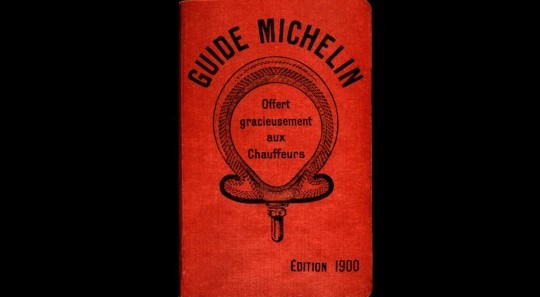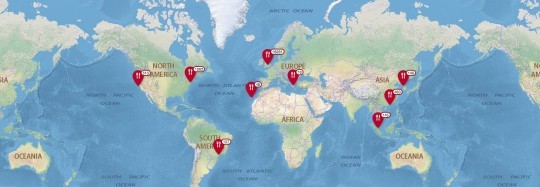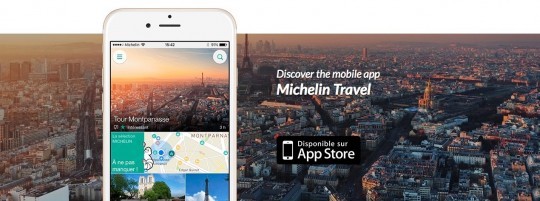There’s no mistake here, the world has a Michelin Guide, and it is entirely related to the tire manufacturer. In this article, we go through the story of this book of recommendations, which are now split into restaurants and travel suggestions.
Yes, they have an app, but you cannot find everything there. That is because Michelin spends a small fortune on editing its renowned guide, and they prefer to sell it to recover some of their expenses. However, the French company is kind enough to offer a travel suggestion website, and a free app.
Evidently, you can find two paid apps published by Michelin in the App Store, and they are also legitimate. The latter two address the two parts of the Michelin Guide, which we will detail in their respective paragraphs that you will find below.
But first, we must explain where this whole Michelin Guide started, and what’s the deal with it. Most of you have probably heard about it at some point in your lives, but the history of the tire-named guide is more complicated than you might think. What is the Michelin Guide, and why does the world have one?

Back in 1900, the Michelin brothers released the inaugural edition of the Michelin Guide. It was called “Guide Michelin,” and it was offered with every tire purchase at the time. The said guide was also present at the year's World Fair, and about 35,000 examples were printed for the event.
Andre and Edouard Michelin offered the guide free of charge, and it was a tool for motorists and tourists alike. It featured information about garages, mechanics, fuel depots (the equivalent of a service station today), and restaurants. Thanks to cleverly-designed icons that were understandable for people that did not speak French, it was also a tool for foreigners.
This was a great promotional tool for Michelin, with the bonus of being useful to any driver of the day. From that maiden edition, the Michelin Guide grew into an institution, which is renowned on a global scale for the excellence behind its recommendations.How important is the Michelin Guide?

If you are a chef or a restaurant owner, the Michelin Guide could mean life and death. It can be the difference between bankruptcy and having your place fully booked for months in advance. The latter case involves a level of excellence that's hard to reach and even tougher to maintain. Back in the day, restaurants worth visiting were included in the guide. That was it, and people were happy with the situation.
The year 1926 introduced stars in the Michelin Guide, which changed everything. Seven years later, a three-star system was implemented, and it is still used today. A “one-star” restaurant meant that it was worth the visit if you were in the area, and a two-star establishment was described as being “worth a detour” just to eat there.
Meanwhile, a three-star restaurant was described as being good enough to command a trip there as the sole purpose of the journey. We do not know how important it was to a chef back then, or how difficult was it to get one or more stars, but we know that chefs treasure Michelin stars today.
They have become so important that people have killed themselves over the potential of losing Michelin stars. Curiously, the chefs that killed themselves had three Michelin stars, which remains the highest distinction in the Red Guide, and their deaths happened before the year’s release of the “guide rouge.” In other words, the pressure of the possibility of losing their maximum rating has been blamed as the main reason that made those chefs commit suicide.Red Guide And Green Guide

The Michelin Guide has two parts that complement each other, but are independent. The Red Guide was the first to appear, and it is focused on restaurants. However, it is pretty strict, and some countries do not have a red guide issued for them. That does not imply that there are no good restaurants in the nation, but it means that the number of establishments worthy of the distinction is not high enough to justify a guide.
The recommendations found in the Red Guide from Michelin are made using a legion of “inspectors,” which visit outstanding restaurants without mentioning their official quality. Instead, they operate like “mystery shoppers,” and get to wine and dine on company dime to see if a restaurant is worthy of getting a Michelin star.
Once an establishment gets one, it will be visited periodically by other inspectors, who will ensure that it deserves to keep the distinction. If things have progressed, it may get more stars in the next edition of the Red Guide.
The Green Guide from Michelin is focused on tourism, and it helps tourists plan trips by including must-see points of interest, along with details regarding accommodation, shops, and restaurants. The latter were good enough to include in a guide, but not ready yet for the Red Guide. Michelin is kind enough to make a “weekend edition” of its Green Guide, which is meant for trips that are shorter than four days. Should you use the guide?

If you enjoy traveling abroad while you are on vacation, instead of enjoying spare time in your city, then you should get a Michelin Guide. If your country (or the one you are visiting) has a Red Guide and you are an enthusiast of fine dining, you should experience, at least once in a lifetime, the experience of a Michelin-star restaurant. Just remember that it might not be cheap, so prepare a proper budget for the dining experience.
The Green Guide from Michelin offers a selection of addresses “for all budgets,” which means that you should consult this book of recommendations for your future visits. From personal experience, we can tell you that an establishment that is in the Michelin Guide, even the green one, will offer an excellent experience when dining is concerned.
Michelin also offers maps, a road and tourist atlas for various countries, and other yearly publications that are designed for drivers that like to travel. Evidently, you can stray from the Michelin Guide and still get a great experience, and a well-rated restaurant on Trip Advisor (or whatever website/app of this kind you prefer) will provide a suitable dining experience without the risk of food poisoning or poor service.
Before you check restaurant reviews online, keep in mind that people have different opinions on some topics, especially cuisine and service, so it is always better to listen to the recommendations of specialists.
You might not agree with food critics, but if several visit a restaurant and advise others to visit, there’s something noteworthy to be experienced.








